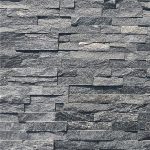Introduction:
Cultured stone, also known as manufactured stone or faux stone, has become a popular choice for both interior and exterior applications in construction and landscaping. This versatile material offers the aesthetic appeal of natural stone while providing additional benefits in terms of cost, weight, and ease of installation. In this article, we will explore the history, production process, applications, benefits, and future prospects of manufactured cultured stone.
History of Cultured Stone:
The concept of manufactured cultured stone dates back to the early 20th century when builders and architects started looking for alternatives to natural stone due to its high cost and labor-intensive installation process. The first attempts at creating artificial stone involved using a mixture of cement, aggregates, and pigments to replicate the look of natural stone. However, these early versions lacked the authenticity and durability of real stone.
In the 1960s, a breakthrough occurred with the development of a new manufacturing process that involved casting molds from real stones to create highly realistic replicas. This marked the beginning of the modern cultured stone industry, which has since evolved to produce a wide range of styles, colors, and textures that closely mimic the appearance of natural stone.
Production Process of Manufactured Cultured Stone:
The production process of manufactured cultured stone involves several key steps that combine traditional craftsmanship with modern technology. The process begins with the selection of high-quality raw materials, including cement, lightweight aggregates, and iron oxide pigments. These materials are carefully blended in precise proportions to achieve the desired color and texture.
Next, the stone molds are prepared by coating them with a release agent to ensure easy removal of the finished product. The blended material is then poured into the molds and allowed to cure and harden. Once the stone has set, it is removed from the mold and undergoes a finishing process to enhance its appearance and texture.
Applications of Manufactured Cultured Stone:
Manufactured cultured stone is a versatile material that can be used in a wide range of applications, both indoors and outdoors. Some common applications of cultured stone include:

1. Exterior Cladding: Cultured stone is often used to enhance the exterior of buildings, providing a durable and aesthetically pleasing alternative to natural stone or brick. It can be used to create stunning facades, accent walls, and architectural details that add character and charm to any structure.
2. click here for info : Cultured stone can also be used to create striking interior accent walls in residential and commercial spaces. Whether used in living rooms, dining areas, or entryways, cultured stone adds a touch of elegance and sophistication to any interior design.
3. Fireplace Surrounds: One of the most popular applications of cultured stone is in fireplace surrounds. The natural look and texture of cultured stone make it an ideal choice for creating cozy and inviting fireplace designs that serve as focal points in any room.
4. Landscaping Features: Cultured stone is widely used in landscaping to create decorative elements such as retaining walls, garden borders, and outdoor kitchens. Its lightweight and durable nature make it a practical choice for outdoor applications that require both beauty and functionality.
Benefits of Manufactured Cultured Stone:
Manufactured cultured stone offers a range of benefits that make it a preferred choice for builders, designers, and homeowners alike. Some of the key advantages of cultured stone include:
1. Cost-Effectiveness: Compared to natural stone, cultured stone is a more affordable option that allows for cost savings without compromising on aesthetics. The manufacturing process of cultured stone also results in less waste, making it a sustainable and economical choice for construction projects.
2. Lightweight: Cultured stone is significantly lighter than natural stone, making it easier to transport, handle, and install. This lightweight nature of cultured stone also reduces structural load requirements and allows for greater design flexibility in various applications.
3. Versatility: Manufactured cultured stone comes in a wide range of colors, textures, and shapes, giving designers and builders the flexibility to create custom looks that suit their specific project requirements. Whether replicating the look of limestone, granite, or slate, cultured stone offers endless possibilities for creative expression.
4. Durability: Despite its lightweight nature, cultured stone is highly durable and resistant to weathering, fading, and cracking. This makes it an ideal choice for exterior applications where natural stone may be susceptible to damage from the elements.
5. Ease of Installation: Cultured stone is designed for easy installation, with interlocking panels or individual stones that can be quickly and securely affixed to various surfaces. This simplifies the installation process and reduces labor costs, making cultured stone a practical choice for both professional contractors and DIY enthusiasts.
Future Prospects of Manufactured Cultured Stone:
The future of manufactured cultured stone looks promising, with continued advancements in production techniques, design capabilities, and sustainability initiatives. As the demand for eco-friendly building materials grows, cultured stone manufacturers are exploring innovative ways to reduce energy consumption, waste generation, and environmental impact.
Furthermore, the development of new technologies such as 3D printing and digital modeling is opening up new possibilities for creating highly detailed and customizable cultured stone products. These advancements are expected to further expand the range of design options available to architects, designers, and homeowners seeking unique and innovative solutions for their projects.
In conclusion, manufactured cultured stone has emerged as a versatile and cost-effective alternative to natural stone, offering a wide range of benefits in terms of aesthetics, durability, and ease of installation. With ongoing advancements in production processes and design capabilities, cultured stone is poised to continue making a significant impact in the construction and landscaping industries for years to come.
References:
- "The Evolution of Cultured Stone: From the Beginning to Now" by StoneCreek Veneer
- "Advantages of Manufactured Stone Veneer" by Boral Building Products
- "Innovation in Cultured Stone Manufacturing" by Eldorado Stone
